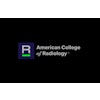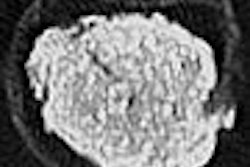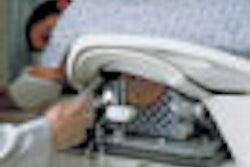For many women with suspicious mammogram findings, minimally invasive biopsy -- that is, tissue sampling rather than lesion excision -- has become the accepted clinical approach.
But this protocol leaves some women vulnerable to underestimation of the extent of disease. In particular, women with lobular neoplasia, which can range from atypical lobular neoplasia (ALH) to lobular carcinoma in situ (LCIS), appear to be at higher risk for developing breast cancer than those without it. How can these patients' cancer status best be evaluated?
Dr. Rachel Brem of the department of radiology at George Washington University in Washington, DC, and colleagues investigated the rate and variables associated with cancer underestimation when lobular neoplasia is diagnosed with tissue-sampling (core or vacuum) biopsy. Their research is presented in the American Journal of Roentgenology (March 2008, Vol. 190:3, pp. 637-641).
Clinicians differ in their evaluation of the significance of the incidental finding of lobular neoplasia in core biopsy. Only 2% of all core biopsies find lobular neoplasia to be the highest-risk lesion, according to Brem. Some doctors believe women with lobular neoplasia should all have surgical biopsies so that the extent of the disease can be made clear; others believe that excisional biopsy is only necessary when the histopathology doesn't correspond to mammographic findings; and still others maintain that lobular neoplasia is an incidental finding and surgical biopsy isn't ever necessary.
Brem's team reviewed 32,420 records of women who had image-guided needle breast biopsy in response to abnormal findings on mammography or ultrasound. The biopsies were performed at 14 institutions from 1988 to 2000. The group broke out data for the following:
- Patients by age at time of biopsy (younger than 51 years, 51 to 60, older than 60)
- Lesions by type (calcifications only, masses only, calcified masses)
- Lesions' size at imaging (less than 5 mm, 5 mm to 10 mm, more than 10 mm)
- Lesions' BI-RADS classification (categories 3, 4, or 5)
- Biopsy methods by guidance method (stereotactic or sonographic)
- Biopsy methods by device (core or vacuum)
- Biopsy methods by number of specimens taken (less than 11, 11 to 20, or more than 20)
- Biopsy methods by specimen radiography (calcifications seen or not seen)
- Histologic variables by percutaneous histology (LCIS or ALH)
- Histologic variables by imaging-histologic agreement (concordant or discordant)
The researchers found lobular neoplasia in 278 (0.9%) of the total cases included in the study; 164 of these 278 went on to have surgical excisions. Disease underestimates were found in 38 (23%) of the 164 surgically biopsied cases. Seventeen of these underestimations were LCIS lesions and 21 were ALH lesions.
Of the 17 underestimated LCIS lesions:
- 7 (41%) were ductal carcinoma in situ (DCIS)
- 6 (35%) were invasive lobular carcinoma
- 2 (12%) were invasive ductal carcinoma
- 2 (12%) were unspecified invasive carcinoma
Of the 21 underestimated ALH lesions:
- 15 (71%) were DCIS
- 3 (14%) were invasive lobular carcinoma
- 3 (14%) were invasive ductal carcinoma
The factors contributing to the most statistically significant underestimation of cancer included biopsy of masses, a higher BI-RADS category, use of a core biopsy device rather than a vacuum-assisted one, and taking fewer specimens (the highest underestimation, 40%, was found when fewer than 10 specimens were taken).
Because the study findings show that considerable sampling error can happen regardless of the type of biopsy device, the number of specimens taken, the agreement between histologic and mammographic results, and mammographic appearance, Brem's team concluded that all patients with lobular neoplasia at core or vacuum biopsy should undergo surgical excisional biopsy.
By Kate Madden Yee
AuntMinnie.com staff writer
March 27, 2008
Related Reading
Hormone therapy hinders breast cancer detection, February 26, 2008
Hormone use for just 3 years ups lobular breast cancer risk, January 15, 2008
Placement of tumor localization clips improves outcomes in breast cancer, December 31, 2007
New model predicts breast cancer risk in African-American women, December 4, 2007
Copyright © 2008 AuntMinnie.com




















